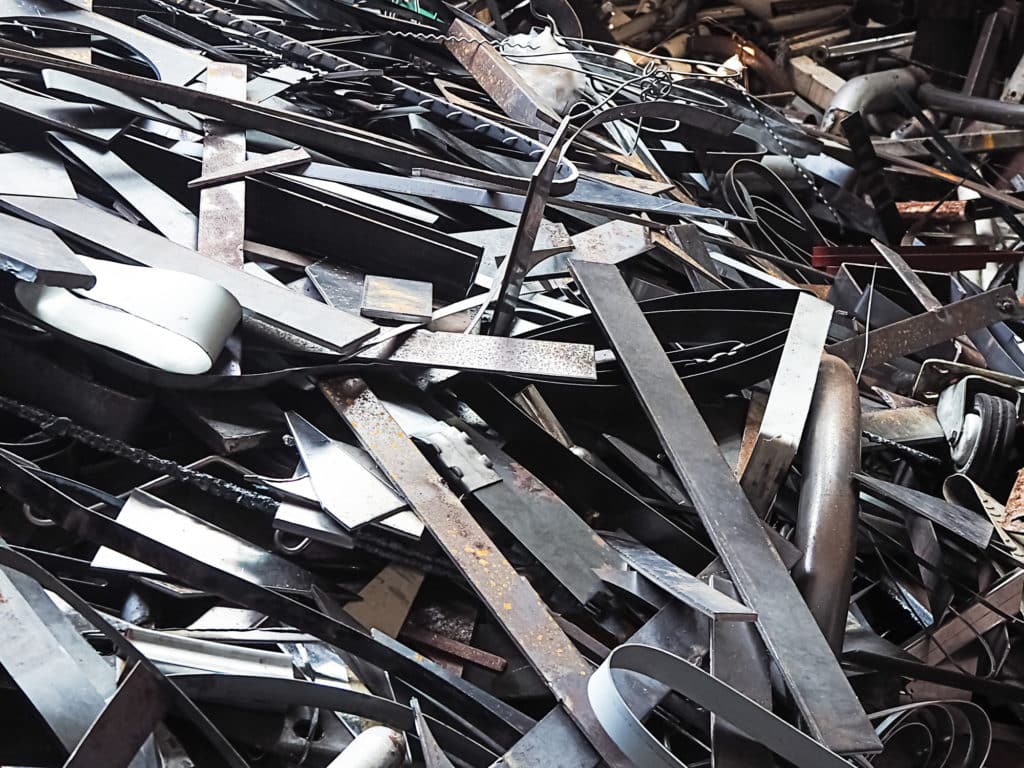Imagine there was something we could all do that would: conserve natural resources, reduce energy consumption, keep waste out of landfills, create jobs, improve our trade balance and lower consumer prices, all at the same time? There is something that does all these things—recycling scrap metal.
Scrap metal recycling has played a role in our economy for over 200 years. In the 1800s new immigrants and native-born Americans collected, transformed and sold scrap to make a living. Since that time, an ever-increasing amount of scrap metal now make its way through the recycling process, as a wide range of industries and individuals increasingly understand the benefit from metal recycling. Today, many types of metal are recycled with improvements in technology and increased efforts in collection of recyclable items.
What are the Benefits from Recycling Metal?

Economic Benefits
Various industries and individuals alike benefit from metal recycling. Industries that utilize metal for manufacturing often end up with piles of scrap after fabricating their products. From a business perspective, why recycle metal scraps and manage that inconvenience when they could be quickly tossed out? Simply put, this trash can be turned into cash. Selling this industrial scrap to recycling facilities increases profits.
While consumers can also make money selling scrap metal, the scrap recycling industry’s biggest contribution to individuals is boosting the economy and job creation. Scrap metal recycling is a labor-intensive industry unto itself. According to a 2015 economic study by the Institute of Scrap Recycling Industries (ISRI), the scrap industry and related suppliers support more than 470,000 good-paying jobs annually from about $105 billion in annual economic activity. In 2014 it generated about $4.4 billion in state and local taxes and $6.76 billion in federal taxes paid by the industry and its employees.
For a manufacturer, recycled metal is cheaper than newly mined metals from virgin ores. Using these lower priced raw materials brings down manufacturing costs. This savings is passed on to customers in the competitive marketplace with lower priced consumer goods. Automobiles, appliances, home furnishings and grocery packaging are among the many consumer goods that benefit from lower prices due to the use of recycled scrap metal.
Global Trade Balance
Because of the competitiveness of the scrap metal recycling industry, each year the United States exports a significant amount of scrap metal. These exports are called “scrap commodities” and contribute an impressive amount to U.S. trade balances. In 2014, the U.S. exported, $21 billion in scrap commodities to 160 countries.
Conserves Natural Resources
While the driving force behind the recycling industry may have been economic at its inception, the significant beneficiary today is the environment. Primarily, the use of scrap metals conserves natural resources. Most metals can be recycled repeatedly, without degrading their properties. A scrap metal recycling facility is like an above-ground mine, supplying raw material for construction, transportation and manufacturing industries. Increased use of scrap material reduces the demand for mined ore, which cuts back the use of this non-renewable resource and reduces the disruption of land and natural habitats.
Reduces Energy Consumption
Another benefit of scrap metal versus mined metal ore is that scrap metal recycling uses considerably less energy. Fabricating usable metal from mined ore is extremely energy intensive. For instance, energy saved using aluminum scrap versus virgin materials is about 95 percent, according to ISRI. Reducing energy consumption leads to reductions in the amount of greenhouse gas emissions. By using iron and steel scrap, rather than virgin materials, carbon emissions are reduced by 58 percent, ISRI states.
Other Environmental Benefits
Recycling steel, aluminum, copper and other metals keeps these materials out of the waste stream, leading to less waste in landfills. Reducing landfill utilization in and of itself is helpful to the environment, but minimizing metals in landfills is particularly important because they can leach harmful chemicals. Reducing both mining and energy consumption subsequently leads to other environmental benefits such as the reduction of air pollution and wastewater.
The Future of Scrap Metal Recycling
As numerous as the benefits are of scrap metal recycling, the majority of the world’s metal production today is still from mined virgin ore. Recycling rates can improve with process improvements. ScrapWare Corp., a Maryland-based provider of software to the scrap metal recycling industry, is continually striving to enhance its product to help recyclers improve efficiency, compliance and profitability. Challenges in the industry, such as ever-changing compliance issues, means recyclers can benefit from software to help them remain competitive.
Other technological changes could improve metal recycling rates. New consumer product designs could make disassembly and material separation easier at disposal time, especially with electronics, which include small amounts of precious metals. Improved recycling process technology could also help keep pace with more complex products. Technological advances such as these to increase scrap metal recycling are important because–we all benefit from metal recycling!
ScrapWare Corp., of Rockville, MD, has been providing software to the scrap metal recycling industry for over 30 years. ScrapWare uses an Oracle database to provide a cloud-based software solution to manage all aspects of a recycling business. With numerous modules, extensive technical support, remote installation and online training, ScrapWare helps recycling companies with compliance, efficiency and profitability. Check out ScrapWare’s website, read the user testimonials, and see its offerings for your recycling software solution.
